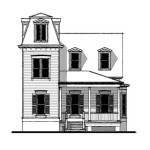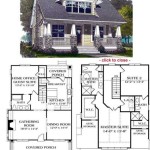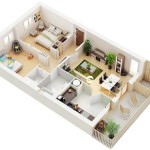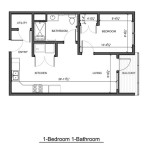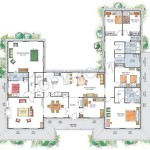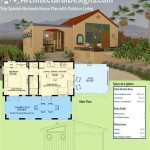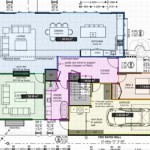Graph Paper For Floor Plans App: A Comprehensive Guide
The creation of effective floor plans is a cornerstone of various disciplines, ranging from architecture and interior design to real estate and home improvement. Traditionally, this process involved the meticulous use of physical graph paper, pencils, erasers, and rulers. However, the advent of mobile technology has ushered in a new era, where graph paper applications offer a digital alternative for designing and visualizing floor plans. These applications leverage the inherent benefits of graph paper – its standardized grid structure – while adding sophisticated features such as scalability, layering, and sharing capabilities. This article explores the functionalities, applications, and advantages of graph paper applications designed for floor plan creation.
A graph paper application designed for floor plans serves as a digital canvas, replicating the grid-based format of traditional graph paper on a mobile or tablet device. The primary purpose of such an application is to provide users with a tool for accurately sketching, planning, and modifying floor plans. These applications are typically equipped with a range of features, including customizable grid sizes, drawing tools for creating walls and architectural elements, and the ability to add annotations and labels. Furthermore, many applications allow users to import existing floor plans or images as a base layer, facilitating the process of renovation or modification. The intuitive interface and accessibility of these applications make them a valuable asset for professionals and hobbyists alike.
Key Functionalities of Graph Paper Floor Plan Applications
The utility of a graph paper application for floor plans hinges on its core functionalities. These functionalities provide the foundation for accurate and efficient floor plan creation and manipulation.
Grid Customization and Scaling: This functionality is fundamental to the application's precision. Users can typically adjust the grid size to represent different units of measurement, such as inches, feet, centimeters, or meters. This customization ensures that the floor plan accurately reflects the real-world dimensions of the space. Moreover, the scaling feature allows users to zoom in and out of the plan without losing resolution, facilitating detailed work on specific areas while maintaining a comprehensive overview of the entire layout. Some applications also allow for the creation of non-uniform grids, where the x and y axes have different scales, which can be useful for representing spaces with unusual dimensions.
Drawing and Editing Tools: A comprehensive suite of drawing tools is essential for creating and modifying floor plans. These tools typically include lines, rectangles, circles, and polygons, allowing users to draw walls, doors, windows, and other architectural elements. The editing tools enable users to move, resize, rotate, and delete elements with ease. Many applications also offer features such as snapping tools, which automatically align elements to the grid or other objects, ensuring precise placement and alignment. Furthermore, some applications include libraries of pre-designed symbols for common architectural elements, such as furniture, appliances, and fixtures, which can be easily dragged and dropped into the plan.
Layer Management: Layer management is a crucial feature for complex floor plans. It allows users to organize different elements of the plan into separate layers, such as walls, furniture, electrical wiring, and plumbing. Each layer can be independently displayed or hidden, enabling users to focus on specific aspects of the plan without being distracted by other elements. This functionality is particularly useful for renovation projects, where users may want to compare the existing layout with proposed changes. Furthermore, layer management simplifies the process of collaboration, as different users can work on separate layers without interfering with each other's work.
Annotation and Labeling: The ability to add annotations and labels is essential for communicating design ideas and specifications. Users can typically add text labels to identify rooms, dimensions, materials, and other key features. Furthermore, they can add notes and comments to specific areas of the plan, providing additional information or instructions. Some applications also allow users to add images or photographs to the plan, which can be useful for visualizing design ideas or documenting existing conditions. The annotation and labeling features enhance the clarity and usability of the floor plan, making it easier to understand and implement.
Import and Export Capabilities: The ability to import and export floor plans in various formats is crucial for interoperability with other software applications. Common import formats include image files (e.g., JPEG, PNG) and CAD files (e.g., DWG, DXF). This allows users to import existing floor plans or images as a base layer for modification or renovation. Common export formats include image files, PDF files, and CAD files, enabling users to share their floor plans with clients, contractors, and other stakeholders. Some applications also offer cloud-based storage and sharing options, facilitating collaboration and access to floor plans from multiple devices.
Applications Across Various Industries
Graph paper applications for floor plans find utility across a broad spectrum of industries, each leveraging the application's features to streamline specific tasks and workflows.
Architecture and Interior Design: Architects and interior designers utilize graph paper applications for developing preliminary floor plans, sketching design concepts, and exploring spatial arrangements. The applications' precision and scalability enable them to create accurate representations of proposed designs, while the annotation and labeling features facilitate communication with clients and contractors. Furthermore, the ability to import existing floor plans or images as a base layer simplifies the process of renovation and remodeling projects. The portability of these applications allows designers to work on-site, making quick adjustments and modifications as needed.
Real Estate: Real estate agents and property managers leverage graph paper applications for creating floor plans of properties for sale or rent. These floor plans provide potential buyers or tenants with a clear understanding of the property's layout and dimensions. The applications' ease of use and portability make them a valuable tool for creating floor plans on-site, even without specialized drafting skills. The ability to add annotations and labels allows agents to highlight key features of the property, such as room sizes, appliance locations, and storage spaces.
Home Improvement and DIY Projects: Homeowners and DIY enthusiasts utilize graph paper applications for planning home improvement projects, such as kitchen renovations, bathroom remodels, and furniture rearrangements. The applications' intuitive interface and drawing tools enable them to create scaled drawings of their spaces, allowing them to visualize different design options and estimate material requirements. The ability to import existing floor plans or images as a base layer simplifies the process of remodeling existing spaces. The applications' portability allows homeowners to work on their plans on-site, making quick adjustments and modifications as needed.
Facilities Management: Facilities managers use graph paper applications for maintaining accurate floor plans of buildings and facilities. These floor plans are used for space planning, asset management, and emergency response planning. The applications' layer management features allow them to organize different elements of the plan into separate layers, such as electrical wiring, plumbing, and HVAC systems. The ability to add annotations and labels enables them to document important information, such as equipment locations, safety procedures, and emergency contact numbers. The applications' import and export capabilities allow them to integrate floor plans with other facilities management systems.
Advantages of Using Graph Paper Applications for Floor Plans
Compared to traditional manual drafting methods, graph paper applications offer several significant advantages, contributing to increased efficiency, accuracy, and collaboration.
Improved Accuracy and Precision: Graph paper applications inherently provide a higher degree of accuracy compared to manual drafting. The digital grid and snapping tools ensure that elements are precisely aligned and positioned, minimizing errors and inconsistencies. The ability to zoom in and out of the plan without losing resolution allows users to work on details with greater precision. Furthermore, the ability to customize the grid size to represent different units of measurement ensures that the floor plan accurately reflects the real-world dimensions of the space.
Enhanced Efficiency and Productivity: Graph paper applications streamline the floor plan creation process, saving time and effort. The intuitive interface and drag-and-drop functionality make it easy to add and modify elements. The ability to copy and paste elements eliminates the need to redraw them repeatedly. The layer management features simplify the process of organizing and managing complex floor plans. Furthermore, the ability to undo and redo actions allows users to experiment with different design options without fear of making irreversible mistakes.
Increased Collaboration and Communication: Graph paper applications facilitate collaboration and communication among team members and stakeholders. The ability to share floor plans electronically eliminates the need for physical copies. The cloud-based storage and sharing options allow users to access floor plans from multiple devices and collaborate in real-time. The annotation and labeling features allow users to communicate design ideas and specifications clearly and effectively. Furthermore, the ability to export floor plans in various formats ensures interoperability with other software applications.
Cost Savings: While some graph paper applications may require a subscription fee, the overall cost is often lower than the cost of traditional drafting supplies, such as graph paper, pencils, erasers, and rulers. Furthermore, the increased efficiency and productivity achieved through the use of graph paper applications can lead to significant cost savings in terms of time and labor. The reduced risk of errors and inconsistencies can also minimize costly rework and delays.
Graph paper applications represent a significant advancement in the creation and management of floor plans. Their functionalities cater to a wide range of users, from architects and interior designers to real estate agents and homeowners. The advantages they offer over traditional methods, particularly in terms of accuracy, efficiency, and collaboration, make them an invaluable tool for anyone involved in planning and visualizing spaces.

Free Floor Plan Layout Apps Reviewed Greenhouse Studio

Draw Floor Plans Try Smartdraw Free And Easily More

A Super Simple Method For How To Draw Floor Plan Hampton Redesign

How To Draw A Floor Plan Scale Measuring Sketching

How To Make A Floor Plan With Graph Paper

Draft Paper On The App

How To Draw A Floor Plan Scale Measuring Sketching

A Super Simple Method For How To Draw Floor Plan Hampton Redesign

Upload Draw From Or Trace Over A Blueprint Roomsketcher

Draft Paper On The App
Related Posts

